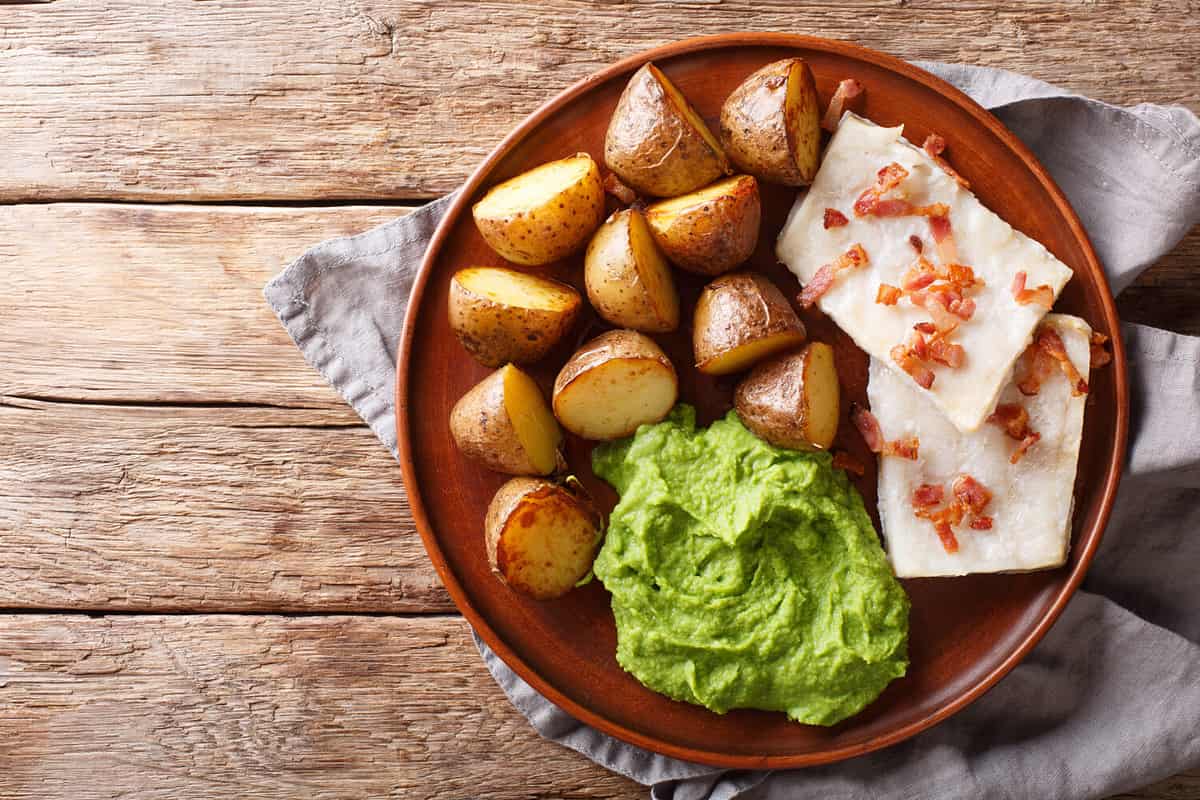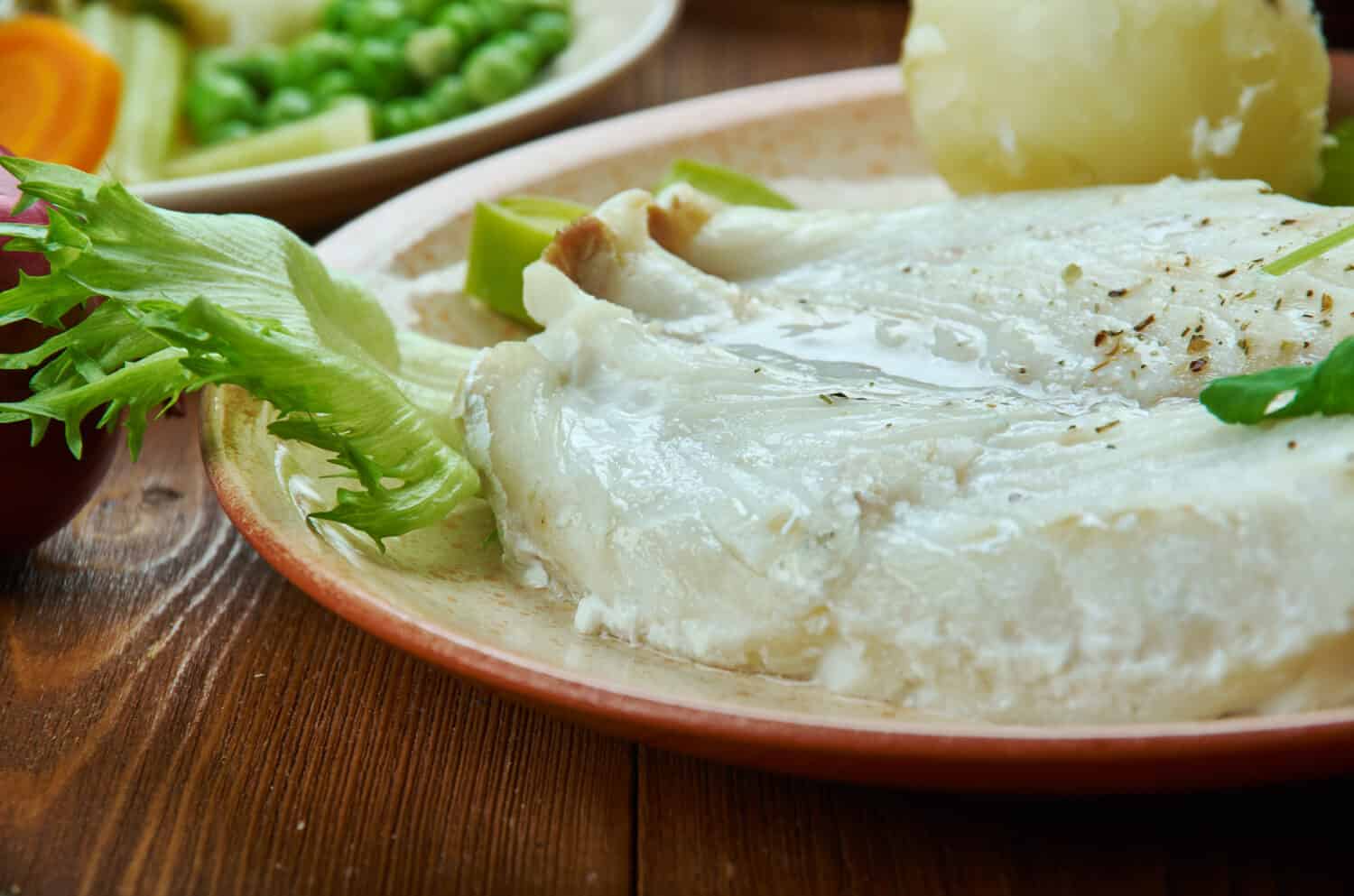Lutefisk is a traditional Scandinavian dish that may not be exactly appealing to the eye for some people. The tradition of eating lutefisk came to the United States with immigrants, and now many hold fast to this tradition, especially for Christmas. You may be surprised at this dish's appearance if you do a quick internet search. Some say it tastes a bit like gelatin and a lot like fish, not to mention the smell isn't going to have you running to the kitchen. So, why do people eat it, and what is lutefisk anyway? Let's explore those questions.
What Is Lutefisk?
Let's go back to the beginning to grasp what lutefisk is. Before modern preservation, stockfish was a standard means of nourishment. Stockfish are fish that are put in the open air to dry. This came in handy during the days of Vikings when travel was a necessity. The fish would dry and preserve, becoming much like jerky.
Lutefisk is a fish that takes jerky like stockfish and soaks them in lye. Yes, you read that right. Lutefisk is a stockfish that is soaked in lye, otherwise known as sodium hydroxide, which is caustic. So, you may be asking yourself, why would anyone eat this? It was first out of necessity and now eaten out of tradition.
Lutefisk is Norwegian for “lye fish,” it can be made from a few different types of fish. These include cod, pollock, haddock, or ling. However, cod is the most common.
The lye softens the stockfish and gives it a gelatinous appearance. Yes, it jiggles! After preparation, this dish is delicious with butter or cream sauce.
Some people can't get over the fact that the fish jiggles and has a fishy taste and odd texture. Others love lutefisk for its smooth and delicate texture and the sauce! Whether or not you enjoy lye fish, it all comes down to personal preference.
History of Lye Fish
Lutefisk is a Norwegian food tradition. It came to the United States as a Christmas delicacy. An interesting fact about this dish is that it is more popular in the United States than in its origin region, most likely out of tradition. However, it has traveled over Nordic countries as well.
The history of lutefisk goes back to sustainability and availability. It started out of necessity and became a Christmas tradition.

©Pawel Uchorczak/Shutterstock.com
Why Do People Eat Lutefisk?
So, why do people eat lutefisk? Some people swear by this traditional Christmas dish, others wish they had never seen it. Regardless of where you fall on the lutefisk love scale, there is no denying that this dish has quite a deep history.
The reason lutefisk first arrived on the scene most likely dates back to the Catholic meat restrictions. During the advent, porridge and fish were the typical food available and allowed. To make this stockfish appealing and festive, it was soaked in lye and dressed up in a tasty and creamy sauce. This is where availability and sustainability come into play. Dry fish was widely available before Christmas; therefore, it was what was eaten.
Recipes for Lutefisk
While you can buy lutefisk packaged now, if you choose to do it in the traditional sense, quite a bit of prepping takes place.
There are a few different traditional ways to prep this dish. Some traditions state to soak the fish in cold water overnight for several days; others say to salt it generously and let it stand for a short time.
However, the fish is traditionally first soaked in lye for the gelatinous look. Remember, lye can be very caustic and shouldn't be consumed. The fish must soak in cold water baths that change often to pull the lye out of the fish. While the fish is soaking in the cold water bath, it needs to be in the fridge.
When ready to cook, remove the skin from the fish, rub it with salt generously, and cook with the skin side down. Since the fish is very delicate, it requires gentle cooking.
Below are a few delicious recipes to try if you are curious about the infamous lutefisk.

©AS Foodstudio/Shutterstock.com
One Last Note
Lutefisk is one of those dishes that people either absolutely love or cannot stand. If you decide to make this dish, don't lose heart if your guests aren't a fan! After all, trying something new is an experience regardless of whether they love or hate it, right? Lutefisk started as a traditional Christmas dish out of necessity; now, it has become a Christmas tradition that many people hold close to their hearts because it reminds them of their ancestors and history, and the tradition of lutefisk is full of deep history!
Print
Lutefisk Gratin
- Total Time: 60 minutes
Ingredients
- 1 lb lutefisk, rehydrated according to package instructions
- 3 cups peeled and diced potatoes
- 1 cup sliced leeks
- 1/4 cup butter
- 1/4 cup all-purpose flour
- 2 cups whole milk
- 1 cup shredded Gruyère cheese
- Salt and white pepper to taste
- Chopped fresh parsley for garnish
Instructions
- Preheat your oven to 375°F.
- In a large pot, cook the diced potatoes until just tender. Drain and set aside.
- In a saucepan, sauté the sliced leeks in butter until softened.
- Stir in the flour to create a roux, cooking for 1-2 minutes.
- Gradually whisk in the whole milk, stirring constantly to avoid lumps. Cook until the mixture thickens.
- Season the white sauce with salt and white pepper.
- In a greased baking dish, layer the rehydrated lutefisk, cooked potatoes, and sautéed leeks.
- Pour the white sauce over the layers, ensuring everything is well coated.
- Sprinkle shredded Gruyère cheese on top.
- Bake in the preheated oven for 25-30 minutes or until the top is golden brown and bubbly.
- Garnish with chopped fresh parsley before serving.
Nutrition
- Calories: 400
- Sugar: 5 g
- Sodium: 600 mg
- Fat: 18 g
- Carbohydrates: 30 g
- Fiber: 3 g
- Protein: 25 g
- Cholesterol: 70 mg
The image featured at the top of this post is ©Fanfo/Shutterstock.com.

